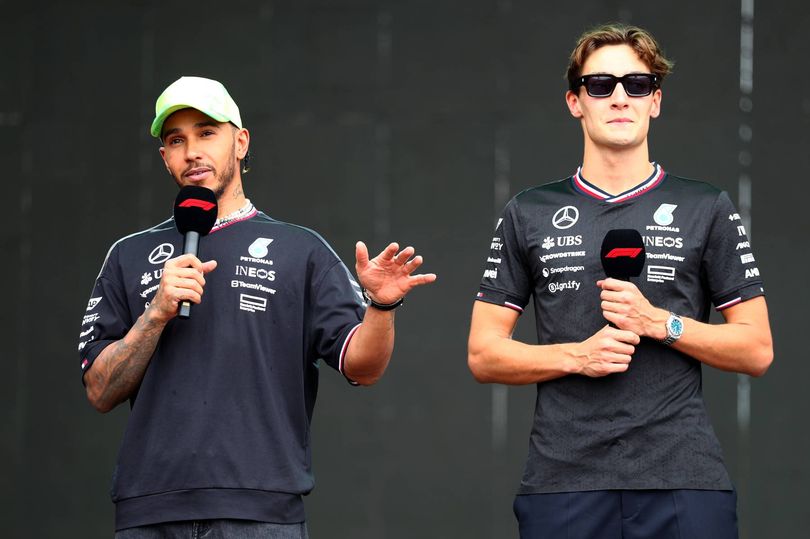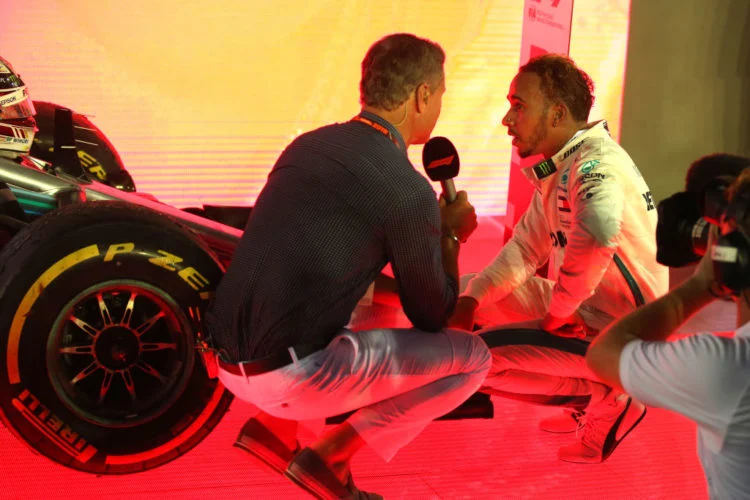After both Mercedes drivers Lewis Hamilton and George Russell did not make their obligatory media appointments due to ‘borderline heatstroke’, fresh concerns around driver safety in Formula One have returned.
Mercedes team principal Toto Wolff said Hamilton fell ill straight after the race, and Russell was deemed not well enough to speak to the media. Race winner Lando Norris admitted to feeling ‘dizzy’ after getting out of the car.
Earlier this season, the Hungarian Grand Prix was raced during a heatwave sweeping across Europe, with temperatures of 31 Celsius (88 Fahrenheit) recorded.
Hungarian authorities and race organizers appearead prepared enough to provide free water and plenty of shaded areas for the hundreds of thousands of fans who attended over the course of the weekend. Having medical provision on site was also essential, but what about the drivers?
“I think that in terms of racing car drivers, we aren’t really considering the risk enough,” Graz University climate scientist Chloe Brimicombe explained to DW. She believes research on the dangers involved, for drivers and pit stop mechanics, is lacking.
“I feel like Formula One would be the sort of organization that could spearhead that and show they’re protecting their staff members. It would be really positive for other industries to see that they’re doing that.”
Heat of an F1 cockpit
Because of the electronics, the aerodynamic design and the placement of the engine behind the cockpit, the cockpit of Formula One cars heat up dramatically. Russell admitted that after the infamous 2023 Grand Prix in Qatar, the cockpit temperature had been closing in on 60 Celsius during the race. Tire supplier Pirelli said the track temperature did not drop below 36C during the night race.
This takes an enormous toll on the drivers, who can lose up to four kilograms (9 lbs.) in body weight during races. Since 2020 they are required to wear overalls thickened for safety reasons — Russell labeled them “like wearing a fleece” — all while coping with heavy physical strain and high g-forces.
That combination is what made the Qatar Grand Prix a punishing event for the drivers. Alpine’s Esteban Ocon revealed he had vomited inside his helmet because of the extreme temperature, while Aston Martin’s Lance Stroll said he had been in danger of losing consciousness. “It was beyond the limit of what is acceptable,” Russell said afterwards.
At the time, Grand Prix Drivers’ Association chairman Alex Wurz said F1 must address the issue, suggesting teams should look into cooling seats and better insulation.
The F1 Commission subsequently approved the creation of a small additional duct to channel fresh air into the cockpit, and motorsport’s governing body the FIA is now also able to trigger an emergency declaration to help drivers.
But concern remains. For all the training drivers do to handle strain, g-forces and temperature, heat fatigue is not a question of race fitness.
“If someone is trained and athletic, we know that allows the [temperature tolerance] threshold to rise, as well as for protective clothing, but it’s not by that much,” Brimicombe said.
The debate raises fundamental questions about what risks should be tolerated in the name of entertainment.
“Are we happy to push people to their limits and not know what the health effects are, both after a race and when they finish driving? I think that’s the issue. We don’t know what those effects are,” she said.
Driver impact
Brimicombe explained that research investigating different cooling measures for helicopter pilots in the army showed there was still a limit to what the human body can endure, even with the presence of cooling seats and cooler clothing.
“I think it would also be good for people to actually understand climate change as well, because it’s such a big platform,” Brimicombe said.










